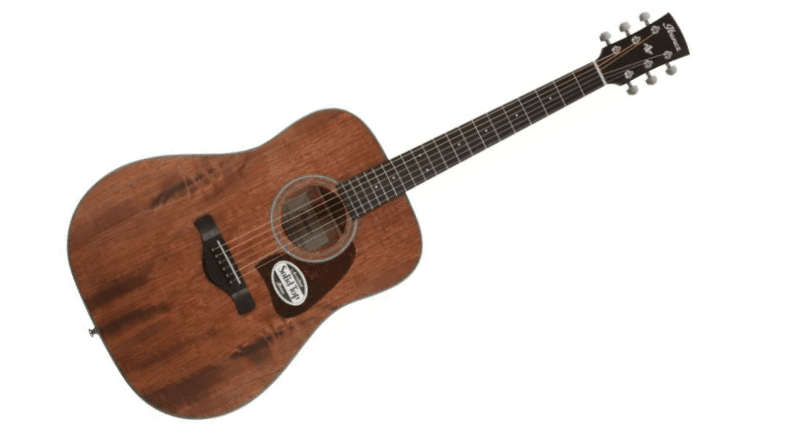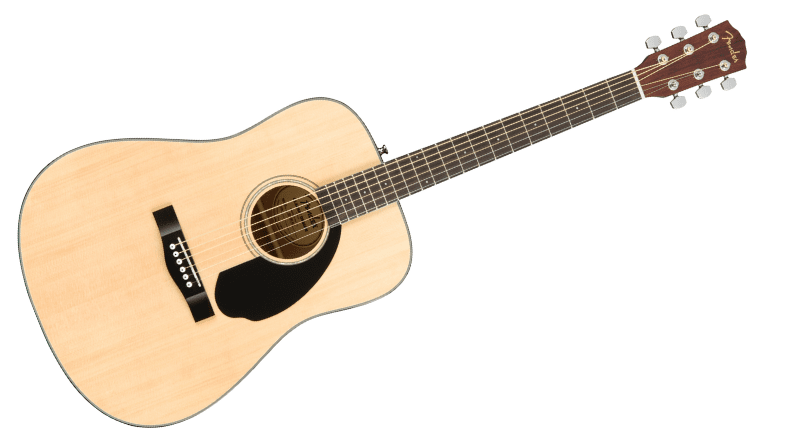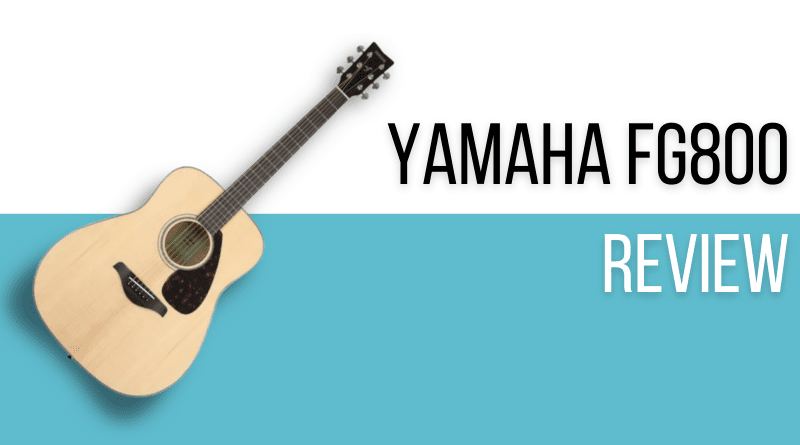It’s no secret that Yamaha are capable of producing some incredible acoustic guitars, in fact, many of the guitars we’ve enjoyed the most during tests and demos here at KGR have been Yamahas.
So why is it that so many sleep on Yamaha’s lower end acoustic models like the Yamaha FG800? The spec sheet alone should have prospective buyers scrambling to get their hands on one!
In this KillerGuitarRigs Review we will be putting the FG800 to the test to find out whether the guitar is as impressive in real life as it is on paper.
Read more about our review process.
Contents
Who Is This For?
The Yamaha FG800 is a seriously impressive guitar that will keep a wide range of players happy. It’s clearly marketed towards the beginner and student level player with its sub $250 price, but its reliability, tone, and overall solid performance actually make the FG800 suitable for all players up to (and including) working musicians.
Whether you’re looking for a quality first instrument, or you’re looking for a workhorse that you don’t mind taking out to a dive bar performance, this might well be your guitar.
Appearance / Features / Controls
The FG800 is a classic dreadnought style acoustic guitar, very much modeled after the Martin D-18. Like almost all Yamaha acoustics, it had a very low key design, nothing particularly flashy, just a well executed, contemporary look.
The body was constructed with a combination of solid and laminate woods. The top was made with solid spruce, and the back and sides with layered nato, which is sometimes referred to as “eastern mahogany”. It’s a great, lower cost substitute for regular mahogany, and offers similar performance and looks.
Nato was also the wood of choice for the neck. We really enjoyed the slim, tapered profile, and smooth satin finish. It was fast playing and comfortable, and would be an extremely forgiving neck for a beginner.
The bridge and fretboard were both made from walnut, which is a wood that is seeing a lot more use, even in high end models. The grain on the fretboard looked good, and was nice and tight, with no deep pores. We loved the rounded fretboard edges, too, they significantly added to the comfort and playability, and we found ourselves wishing other manufacturers at this price point would do the same.
We were also big fans of the Grover style tuners. They worked just as well as actual Grover branded tuners, and really helped the guitar keep its pitch even after extended play.
Performance / Sound
The FG800 was a top player during our test sessions. It was big and bold, and far outperformed its price tag (and our expectations). It was well set up right out of the box, with a nice medium height action,
When strummed, we found it to be an incredibly responsive guitar. The bracing has been improved since its predecessor, the FG700, which has resulted in improved dynamics. When we softened our touch, the guitar sounded sweet and rich, and when strummed hard the tones tightened up significantly.
Sustain was a strong suit for the FG800, especially when strumming open chords. This was largely helped by the improved scalloped bracing, which not only gave it superb sustain, but also provided it with huge presence and awesome projection.
The spruce top kept the tones snappy and bright, which gave it a nice shimmering top end with enough punch to keep things sounding full. When played with arpeggiated chords or fingerstyle, the note separation was far better than expected, with bell like clarity.
The mid range, particularly at the lower end of the mids, was the most prominent part of the FG800s tone profile, but they never felt overpowering. In fact, they complemented the upper registers well to provide some great balance to the tone.
Playability was overall very good. The rounded edges on the fretboard were really noticeable, and as briefly mentioned, much appreciated. We found that the fretwork was finished well, with smooth edges, and no sprout – all credit due to Yamaha’s excellent QA process. The frets themselves could have had a nicer polish on the crowns, but that is something that can be quickly taken care of with wire wool.
One notable downside is that younger or smaller players may not find it comfortable to hold and play down to its sheer size. It’s a full size dreadnought, so even though the neck is slim and fast, the body is large and very thick, so some players might have difficulty finding a comfortable position in both seated and standing positions.
Other Guitars to Consider
The Yamaha FG800 is really a tough guitar to beat at this price point, but it’s understandable that you might want to check out some other models before settling on any one model. We’ve rounded up some great alternative options below for your consideration:
Ibanez AW54

If you’re looking for something a little darker sounding (and looking), the Ibanez AW54 is another great choice. For around the same price as the Yamaha FG800, this Ibanez offers a solid okume top, which gives it a rich, dark tone that spruce can’t replicate. Being a dreadnought, it also offers big tone and projection, and is absolutely worth your consideration.
Fender CD-60S

The Fender CD-60S is a great entry level option from one of the biggest brands in the business. Visually, it’s extremely similar to the FG800, and even incorporates basically the same wood selection, with a solid spruce top, mahogany back and sides, and walnut fretboard and bridge. It offers some great sparkle and powerful projection, both being key to a good dreadnought tone.
Final Thoughts on the Yamaha FG800
We absolutely loved getting to spend time with the Yamaha FG800. Even as experienced players, we found it had a lot to offer in terms of tone and playability.
Considering the quality of fit and finish, combined with the choice of woods and quality hardware, we think this guitar is actually significantly underpriced. In fact, we think it even holds its own against the likes of the Taylor Academy 10, a guitar that costs almost 3 times as much. Many people end up buying the FG800 as a first guitar, and never end up replacing it, and we think this speaks volumes about the value for money that it represents. It’s a wonderful option for beginners, but the performance is strong enough that professional musicians can rely on it when they don’t want to, or aren’t able to use their more expensive guitars.


